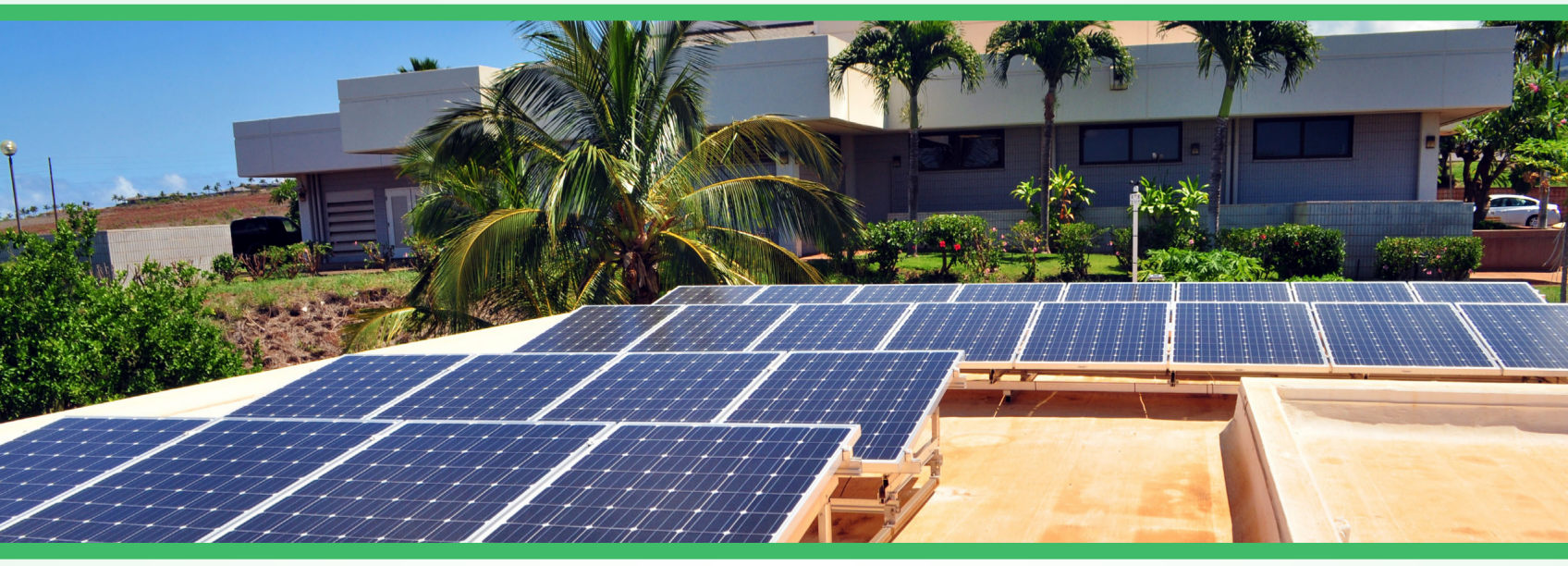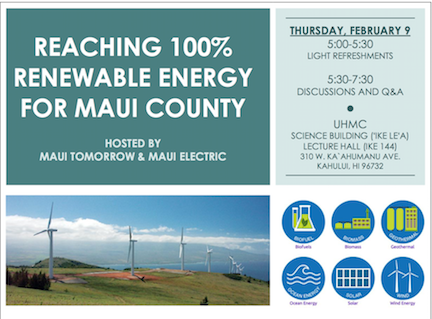Summary of Changes to PV Rules
Adopted by the Hawaii Public Utilities Commission (PUC)
on October 13, 2015.
As a public service, the Maui Tomorrow Foundationʻs Energy Committee has summarized changes to the rules for residential photovoltaic (solar electricity) systems:
- The utility still wants to increase the minimum monthly charge for all customers, including grandfathered NEM systems, but the PUC did not agree to do so at the current time.
- These changes apply to everyone who has MECO service who is interested in adding PV. Only pure off grid systems without any service to the location are not affected by the new Order.
- Beginning October 12, 2015, all new PV systems on Maui will need to be “self-supply” or “grid-supply”. Net Metering as a program is closed.
- 18% of MECO’s customers (12,893 meters) have systems installed under the old Net Metering program. These systems are grandfathered, and owners will continue to receive the same credit as before.
- If grandfathered systems are expanded, they will lose their net metering agreement. Any increase in system capacity requires the entire home to convert to one of the new options of self-supply or grid-supply.
- Grandfathered systems can be transferred to a new owner.
- Maui now has a peak load of 191 MegaWatts and 100 MegaWatts of grandfathered NEM.
- The new “grid-supply” option will be limited to 5 MegaWatts of additional capacity on Maui, or a 5% increase from the current amount of 100 MegaWatts.
- Grid-supply PV systems will receive a credit for unused electricity. The amount of the credit will be 17.16 cents per kWh on Maui.
- The grid-supply credit can be thought of as a wholesale credit compared to the old NEM credit which was retail (approximately 35 cents per kWh)
- The grid-supply rate is only guaranteed for two years.
- Self-supply PV systems involve the use of storage so that electricity is not “exported” to the MECO system for more than 60 seconds.
- Although the rules allow different types of storage, it is likely that home batteries will be the main approach. Since batteries have a limited lifetime, we are concerned that this without adequate tracking of batteries and a recycling program, this new approach may lead to a long term hazardous waste disposal problem.
- Self-supply systems will be more expensive than traditional NEM systems, as storage is still relatively expensive.
- The rules are pushing new systems to be self-supply rather than grid-supply, as self-supply systems are offered faster review (promised at 15 business days) and there is no cap on the maximum number of self-supply systems.
- The PUC has a vision in which self-supply systems will not be off-grid systems; they will have batteries that occasionally will provide support/stability to the grid. There is no tariff or way to pay the customer for these services at the present time.
- In addition to the new types of PV systems, the PUC also decided that MECO will be moving to “Time of Use” (TOU) rates.
- TOU rates are designed to get people to use electricity at specific times. The Maui TOU will have three time periods. 1) There will be a high “peak” rate for early evening use; 2) a low “mid-day” rate for the time of the day when we have lots of solar power; and 3) a low “off-peak” rate for late evening and other times of low use. It appears this will be a voluntary opt-in rate to start.



